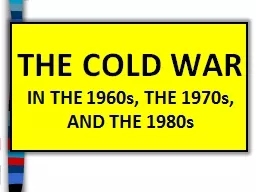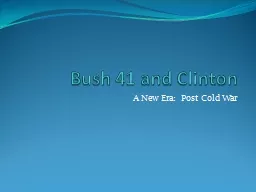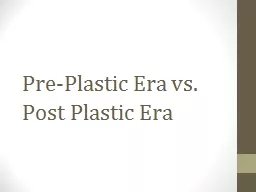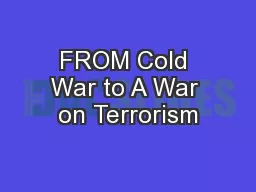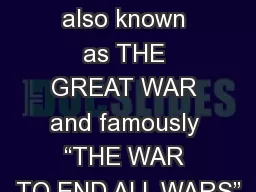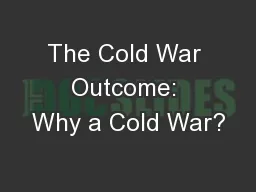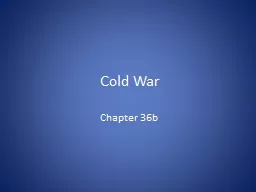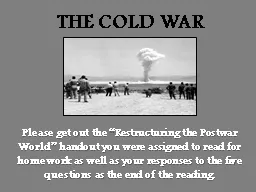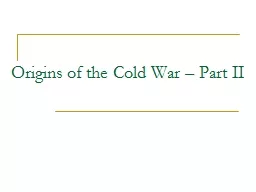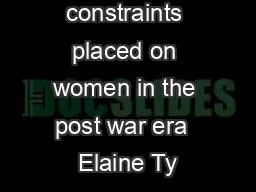PPT-The End of an Era: The Cold War Ends (Part 1)
Author : celsa-spraggs | Published Date : 2019-01-29
EQ What events led to the end of the Cold War and how did it impact the countries involved July 1975 Apollo Suyez Test Project This was a joint venture between the
Presentation Embed Code
Download Presentation
Download Presentation The PPT/PDF document "The End of an Era: The Cold War Ends (Pa..." is the property of its rightful owner. Permission is granted to download and print the materials on this website for personal, non-commercial use only, and to display it on your personal computer provided you do not modify the materials and that you retain all copyright notices contained in the materials. By downloading content from our website, you accept the terms of this agreement.
The End of an Era: The Cold War Ends (Part 1): Transcript
Download Rules Of Document
"The End of an Era: The Cold War Ends (Part 1)"The content belongs to its owner. You may download and print it for personal use, without modification, and keep all copyright notices. By downloading, you agree to these terms.
Related Documents


